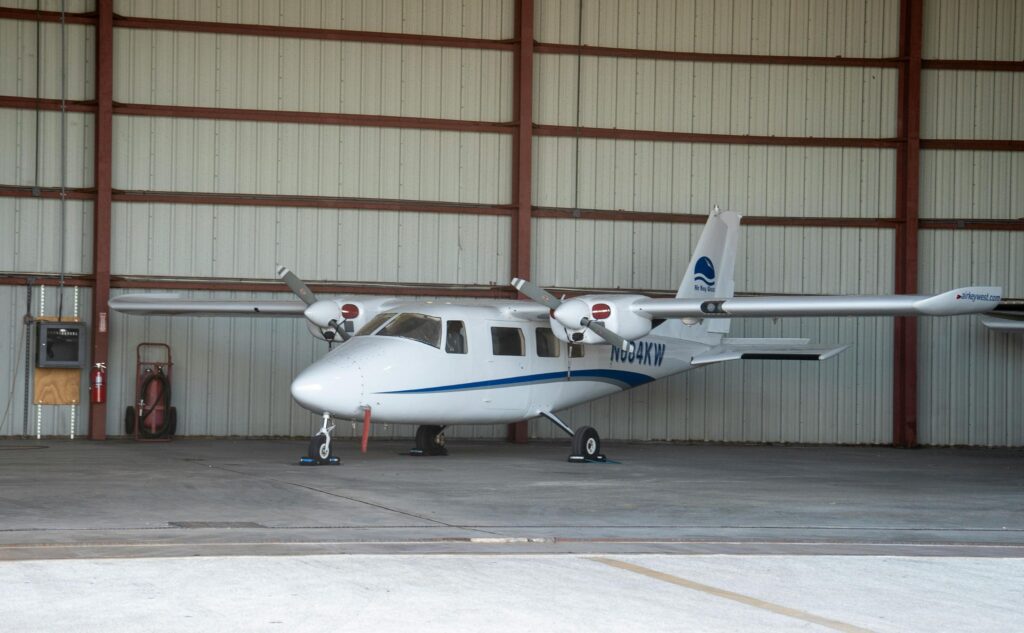
Engine Preservation: The Second Best Way to Protect Your Aircraft Engine from Corrosion
How to Preserve Your Aircraft Engine When Not Used for More Than 30 Days.
We recommend operating your aircraft engine at least every two weeks to prevent corrosion damage. Flying for at least one hour every two weeks ensures the engine heats up properly, particularly the oil system. This process helps lubricate all internal parts and prevents moisture build-up. The oil temperature should reach at least 100°C to evaporate any water accumulated from combustion by-products.
If regular operation is not possible, engine preservation—also known as engine pickling—is the best alternative. Many aircraft owners skip this step due to a lack of knowledge or concerns about the effort involved. However, the process is neither difficult nor expensive. Skilled pilot-owners can even perform it under pilot-owner maintenance. Engine preservation is worth the effort and saves time, money, and stress in the long run.
Tanis Aircraft Products Preserving Kit
The easiest way to preserve your aircraft engine is by using a Tanis Aircraft Products Preserving Kit. Kits are available for both four-cylinder and six-cylinder engines. Each kit includes essential components, but you need to purchase additional MIL-L-6082C (SAE J1966), Grade 1100 mineral aircraft engine oil separately. We recommend AeroShell Oil 100 (Mineral).
4-Cylinder Kit Includes:
- 4 MS27215-2 desiccant plugs
- 3 TU20000-3 Tyvek desiccant bags
- 1 TU20000-1, 8 oz bottle w/sprayer of MIL-P-46002
- 1 TU20000-7, ½ gallon of MIL-C-6529C Type I
- 3 TU20000-12 red streamers
- 1 TU20000-5 duct tape
- 1 TU20000-13 label for engine
- 03249 instructions for documentation
6-Cylinder Kit Includes:
- 6 MS27215-2 desiccant plugs
- 3 TU20000-3 Tyvek desiccant bags
- 1 TU20000-1, 12 oz bottle w/sprayer of MIL-P-46002
- 2 TU20000-7, ½ gallon of MIL-C-6529C Type I
- 3 TU20000-12 red streamers
- 1 TU20000-5 duct tape
- 1 TU20000-13 label for engine
- 03249 instructions for documentation
Engine Preservation Process
Engine preservation is simple and can be performed by pilot-owners or aircraft mechanics. This preservation kit simplifies the process, ensuring proper steps are followed to prevent damage from engine inactivity.
The kit contents align with engine manufacturers’ recommendations. Always follow their service letters, bulletins, or (standard practice) maintenance manuals:
- Continental: Standard Practice Maintenance Manual M-0 or SIL99-1
- Lycoming: SL-L180B
Application
- Drain oil from the engine.
- Mix preservative and mineral oil in a 1:3 ratio by volume. Add one part of MIL-C-6529C Type I preservative compound (included in the kit) to three parts of MIL-L-6082C (SAE J1966), Grade 1100 mineral aircraft engine oil. Example: 1 quart of preservative plus 3 quarts of mineral oil equals 4 quarts of mixture.
- Fill the engine with the mixture to normal operating levels.
- Operate the engine until it reaches proper temperatures as specified in the manufacturer’s service letter/bulletin.
- Ensure the aircraft is ready for storage:
- Magneto switches are OFF.
- Throttle is CLOSED.
- Mixture control is at IDLE-CUT-OFF.
- Battery is disconnected (optional).
- Brakes are set, wheels blocked, and tie-downs installed (if required).
- Disconnect all spark plug leads.
- Remove the top spark plug (protect plug ends).
- Spray each cylinder with MIL-P-46002 (NOX-RUST). Rotate the crankshaft to fully retract each piston before spraying the cylinder. Continue rotating and spraying until all cylinders are coated. The sprayer works upside down as well.
- After spraying all cylinders, move the crankshaft so no piston is at the top dead centre. Spray each cylinder once more and DO NOT ROTATE THE CRANKSHAFT AFTER THE FINAL SPRAYING!
- Install dehydrator plugs. Inspect them every 15 days for colour change.
- Place desiccant bags in engine openings before the engine cools. Cover openings with included tape and attach red warning streamers to each bag.
- Attach a “DO NOT TURN PROPELLER – ENGINE PRESERVED” label to the propeller or engine. Record the date of preservation on the label.
Returning the Engine to Service
- Remove all labels, tape, and desiccant bags.
- Remove cylinder dehydrator plugs, rotate the propeller several times by hand, and reinstall spark plugs and leads. Torque to manufacturer specifications.
- Replace the preservative mixture with regular oil per manufacturer recommendations.
- Perform inspections as directed in the manufacturer’s service letters/bulletins.
- Complete a normal pre-flight inspection before operation.
Conclusion
Engine preservation is an essential step to protect your aircraft engine from corrosion when it’s not in regular use. By following these procedures, you can extend the life of your engine and prevent costly damage. In our next blog post, we will explore different aircraft engine oil options and recommendations. Stay tuned!
About Quest Aeronautics
Quest Aeronautics is a state-certified engineering office for aviation, dedicated to shaping the future of general aviation by providing innovative and cost-effective solutions to enhance aircraft performance and operations. With a focus on CS/FAR-23 and experimental/amateur-built (E/A-B) aircraft, Quest Aeronautics provides a range of services including flight testing, aircraft operations and maintenance consulting, high-quality aviation products, and tailored support for E/A-B projects. Collaborating with industry-leading partners, Quest Aeronautics is committed to delivering unparalleled support and expertise to individuals and organisations in the general aviation market.
About Author
Sebastian, the founder of Quest Aeronautics, is a driven and enthusiastic individual with a passion for aviation. Before delving into aviation, he gained valuable experience as a chemical process engineer and laboratory technician. Sebastian holds a Master of Science in Engineering and a commercial pilot licence, with several fixed-wing aircraft ratings under his belt. He has also completed an introduction course for fixed-wing performance and flying qualities flight testing at the National Test Pilot School in Mojave, CA and is compliance verification engineer for flight.
